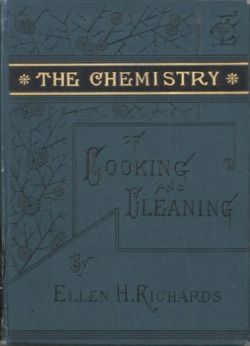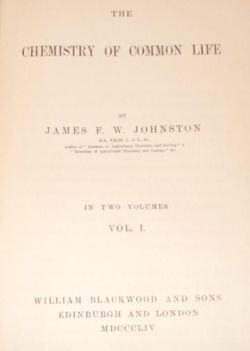 In a popular science book, the English Chemist James Lovelock described his Gaia hypothesis to a lay readership. The hypothesis proposed that living organisms and inorganic material on Earth are part of a dynamic, integrated, self-regulating system that shapes the Earth’s biosphere, and maintains ideal conditions for life to flourish. Initially received with skepticism, the Gaia principle is now acknowledged and accepted as a scientific theory that is embraced, to some extent, by New Age environmentalists. Written at the start of the environmental movement, it is the basis of a number of predictions made by Lovelock as part of the heightened awareness of environmental concerns, including global warming. Prior to the first edition of Gaia a new look at life on Earth, published by Oxford University Press in 1979, the theory was described in scientific journals. The February 1975 issue of the New Scientist, which included the article The Quest for Gaia by Lovelock, is impossible to find, and the first edition of the Oxford University publication is now quite scarce.
In a popular science book, the English Chemist James Lovelock described his Gaia hypothesis to a lay readership. The hypothesis proposed that living organisms and inorganic material on Earth are part of a dynamic, integrated, self-regulating system that shapes the Earth’s biosphere, and maintains ideal conditions for life to flourish. Initially received with skepticism, the Gaia principle is now acknowledged and accepted as a scientific theory that is embraced, to some extent, by New Age environmentalists. Written at the start of the environmental movement, it is the basis of a number of predictions made by Lovelock as part of the heightened awareness of environmental concerns, including global warming. Prior to the first edition of Gaia a new look at life on Earth, published by Oxford University Press in 1979, the theory was described in scientific journals. The February 1975 issue of the New Scientist, which included the article The Quest for Gaia by Lovelock, is impossible to find, and the first edition of the Oxford University publication is now quite scarce.
Chemist Ellen Henrietta Swallow Richards, one of the founders of home economics, was also the first woman to study at MIT. From 1873 to 1878, she became the university’s first female instructor as an unpaid chemistry lecturer in the MIT Women’s Laboratory. In  1882, just before the closing of the Women’s Laboratory and the opening of MIT’s Sanitation Laboratory for which she was appointed as an instructor in sanitary chemistry, she published her first book: The Chemistry of Cooking and Cleaning, published by Estes & Lauriat in Boston. Subsequent editions of her book were published in 1897 and 1907. The book gave non-scientific readers some practical information as to the chemical composition of the common household cleaners. In the preface of the book, she writes: “The number of patent compounds thrown upon the market under fanciful names is a witness to the apathy of housekeepers…. These mysterious chemicals are not so many or so complicated in structure but that little patient study will enable any one to understand the laws of their action….” At the request of the Massachusetts State Board of Health, she developed the so-called “Richards’ Normal Chlorine Map”, which was predictive of inland water pollution in the state of Massachusetts. It plotted the chloride concentrations and distribution in waters throughout the state. As a result of her work, Massachusetts established the first water-quality standards in America, which was followed by the first modern sewage treatment plant, built in Lowell, Massachusetts.
1882, just before the closing of the Women’s Laboratory and the opening of MIT’s Sanitation Laboratory for which she was appointed as an instructor in sanitary chemistry, she published her first book: The Chemistry of Cooking and Cleaning, published by Estes & Lauriat in Boston. Subsequent editions of her book were published in 1897 and 1907. The book gave non-scientific readers some practical information as to the chemical composition of the common household cleaners. In the preface of the book, she writes: “The number of patent compounds thrown upon the market under fanciful names is a witness to the apathy of housekeepers…. These mysterious chemicals are not so many or so complicated in structure but that little patient study will enable any one to understand the laws of their action….” At the request of the Massachusetts State Board of Health, she developed the so-called “Richards’ Normal Chlorine Map”, which was predictive of inland water pollution in the state of Massachusetts. It plotted the chloride concentrations and distribution in waters throughout the state. As a result of her work, Massachusetts established the first water-quality standards in America, which was followed by the first modern sewage treatment plant, built in Lowell, Massachusetts.
 When James Finlay Weir Johnston wrote The Chemistry of Common Life, in 1854, he hoped that someday it would become a classic of popular science writing. He dedicated the book to his friend and patron David Brewster. Together, they proclaimed the decline of science and the need to promote it throughout the British provinces. Using language that appealed to anyone interested in how the world worked, Johnston skillfully presented the science of chemistry to the non-scientist. The book begins with food and drink, and continues with poisons, scents, fertilizers and explosives. It inspired the reader to think in terms of chemical reactions and compositions at a time when chemistry was the fundamental, exciting, and popular science. The book became, in effect, his memorial, because by the time it was published he had died from a lung infection which he caught while travelling abroad.
When James Finlay Weir Johnston wrote The Chemistry of Common Life, in 1854, he hoped that someday it would become a classic of popular science writing. He dedicated the book to his friend and patron David Brewster. Together, they proclaimed the decline of science and the need to promote it throughout the British provinces. Using language that appealed to anyone interested in how the world worked, Johnston skillfully presented the science of chemistry to the non-scientist. The book begins with food and drink, and continues with poisons, scents, fertilizers and explosives. It inspired the reader to think in terms of chemical reactions and compositions at a time when chemistry was the fundamental, exciting, and popular science. The book became, in effect, his memorial, because by the time it was published he had died from a lung infection which he caught while travelling abroad.
Despite the fact that chemistry is a complex science, it is quite fascinating to delve into the chemistry behind rockets, or viruses, or the molecular breakdown of a hangover within one’s body in common terminology. Through popular chemistry we can all learn how the properties, compositions, and structure of substances (elements and compounds), impact our lives for the good or for the bad.
Another book that we previously featured in a posting in the genre of natural history and environmental science, is also very much about chemistry. Rachel Carson’s Silent Spring, published by Houghton Mifflin Company in 1962, deals with the effects of the use of DDT as an agricultural pesticide. Carson’s book served as a wake-up call when she uncovered that DDT was killing the birds of Cape Cod, and was also contaminating the rivers in places where through the food chain and poisoned Salmon had reached human consumers. In following James Johnston’s footsteps from 100 years earlier, Carson brought chemistry to the public eye and helped spread its importance of its effect to our lives.
{ 0 comments… add one now }